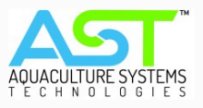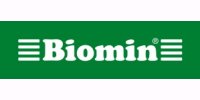JWAS - Helpful Hints for Authors
Papers submitted to the Journal of the World Aquaculture Society are considered for publication on the basis of scientific competence and the significance of the information to aquaculture. Authors should realize, however, that even an important study that is conducted using appropriate methodology may not be accepted for publication if the paper is poorly organized or difficult to understand. Beyond that, papers that are well written will be reviewed quicker and published in less time because there will be fewer revisions. Although most authors are concerned primarily with the acceptability of their paper for publication, there are two other important reasons to be concerned about the quality of your paper. First, the goal of publishing a journal article is to convey information from the writer to the reader. If your paper is difficult to read, other scientists may decide not to waste time trying to read it or, worse, they may read the paper but misinterpret the information. In short, a poorly written paper will not serve the only purpose for which it is written. There is also an important fiscal benefit to the Society when authors submit carefully prepared manuscripts. Publishing a scientific journal is expensive, and a significant part of that expense consists of charges for copyediting and making corrections at the proof stage. These costs can be dramatically reduced if authors are careful when they prepare papers for publication. Below are some comments and suggestions that will help you avoid some of the problems we routinely find in papers submitted to the Journal.
! Read some good books on writing and graphics.
Writing is difficult, yet most scientists spend little time trying to improve their writing skills. Aside from practice, practice, practice, the best way to improve your writing is to read good writing, and lots of it. The next best way is to read books about good writing. In addition to the many excellent books on English grammar and writing, there are at least two books that should be read by all scientists. First is "How to Write and Publish a Scientific Paper" by Robert A. Day (1998, Oryx Press, Phoenix, Arizona, USA). This relatively inexpensive book is an excellent (and humorous) introduction to scientific writing. The second is the classic book on scientific graphics, "The Visual Display of Quantitative Information," by Edward R. Tufte (1997, Graphics Press, Cheshire, Connecticut, USA). Tufte's book is not a "how-to"guide for preparing effective illustrations; it is rather a straightforward and engrossing discussion of the theory and practice of statistical graphics.
! Make sure that your paper conforms to the format outlined in our "Checklist for Manuscript Preparation."
Books about writing help develop your general writing style. However, each scientific journal has specific requirements (which vary from journal to journal) for the format and organization of manuscripts submitted for peer review. The formatting guidelines for manuscripts submitted to our Journal are listed in a "Checklist" printed on the last two pages of every March issue of the Journal. A copy of the "Checklist" is also posted at this website. You must submit a completed copy of the "Checklist" with your original submission. We occasionally change our guidelines so be sure to look at the "Checklist" printed in the most current March issue of the Journal.
! Proofread your manuscript carefully to make sure that all typographical errors are corrected, that the text says exactly what you want it to say, and that all data entries in tables and figures are correct.
We do not allow changes at the proof stage unless they are needed to correct errors made during typesetting or composition. So make sure that the final version of the manuscript that you send the editor is perfect in every respect.
! Make sure that the title page of your paper is in the correct format.
The manuscript title page should be the easiest part of a scientific paper to prepare, yet improper title page format is one of the most common problems in papers submitted to the Journal. Our copyeditor spends a considerable amount of time rewriting title pages so that they will be typeset correctly. An example of the proper title page layout is presented at the end of these guidelines. Note that the corresponding author is assumed to be the first-listed author unless there is a footnote to the contrary. To reduce ambiguity in indexing services, be sure to identify authors by at least one name (not just initials) in addition to the surname (family name). Example: use "Craig S. Tucker" instead of "C. S. Tucker." And do not abbreviate institutional affiliations in author's addresses. Examples: use "Universidad Nacional Autónoma de México" instead of "UNAM"; use "International Center for Living Aquatic Resources Management" instead of "ICLARM."
! Make sure that all abbreviations for units of measure conform to those indicated on the inside back cover of the Journal.
A list of abbreviations that can be used without explanation is printed on the inside back cover of each Journal issue, beginning with March, 1999 (Volume 30, No. 1). Accepted abbreviations are also listed in our Editorial Policy at this website.
! References to specific equipment or proprietary products must include the name and address (city, state or territory, and country) of the manufacturer or producer of the product.
Here is an example: "Dissolved oxygen was measure with a YSI Model 51 polarographic oxygen meter (Yellow Springs Instrument Company, Yellow Springs, Ohio, USA)."
! Software used to conduct statistical analyses are tools and should be referenced like equipment, rather than as supporting evidence.
A correct citation for a statistical analysis might be "Data were analyzed by paired-comparison t-test (Steel and Torrie 1960) using SAS Version 6.1 software (SAS Institute, Inc., Cary, North Carolina, USA)." In this example, the text by Steel and Torrie is referenced as supporting the choice of that particular statistical analysis and SAS is referenced only as the supplier of the tool used to conduct the analysis. The in-text reference to SAS is not, therefore, listed in the Literature Cited.
! Cross-check literature citations in the text with the references listed in the Literature Cited section, and vice versa.
Incorrect reference citations are the most common problems we find in scientific manuscripts. References are often cited in the text or in tables but not listed in the literature cited, or references are listed in the Literature Cited but never cited in the text. In a recent paper submitted to the Journal, seven citations in the text were not listed in the Literature Cited and 31 references listed in the Literature Cited were not cited anywhere in the text. Cross-checking the references is easy: read the paper carefully and every time you come to a reference in the text, put a check by it in the text and next to the corresponding citation in the Literature Cited. If you find that a citation is mentioned in the text but is missing in the Literature Cited, make a note to add it. When you finish, make sure every citation in the Literature Cited has a check mark by it. If a citation is not checked, delete it.
! Make sure all references are in the proper format.
Examples of the proper format for references are presented at the end of these guidelines. One key to citing references correctly is to remember that sufficient information must be given in the citation to allow a person to retrieve the publication. Note that we do not abbreviate anything in the citation except Co. (for Company), Inc. (for Incorporated), Ltd. (for Limited), USA, UK, and D.C.
! Make sure references are in the correct order in the Literature Cited.
The following rules apply:
! References are listed alphabetically by first author's surname.
! If two or more authors share the same surname, then the ordering is determined by a letter-by-letter comparison of the first author's initials (Example: Jones, A. K. precedes Jones, B. S.)
! If two or more works by the same author are listed, ordering is by date (Example, Jones, A. K. 1996 precedes Jones, A. K. 1998) ! If two or more works by the same first author are listed, ordering is as follows:
- all works published as single author (ordered by date), then
- all works published with two authors (alphabetized within this grouping), then
- all works published with three or more authors (alphabetized within this grouping).
Here is an example sequence determined by these rules:
Allman, D. 1972
Allman, G. 1970
Clapton, E. 1970
Clapton, E. 1975
Clapton, E. 1975 and J. Hendrix 1968
Clapton, E. and J. Hendrix 1972
Clapton, E. and A. King 1970
Clapton, E., J. Hendrix, J. Page, and E. Vedder 1973
Clapton, E., C. Santana, and K. Richards 1987
Clapton, E., P. Townshend, and G. Harrison 1971
Knopfler M. 1980
Vedder, E. 1992
! Carefully proofread your tables for correct data entry and correct format.
Typographical errors, misplaced decimal points, and other simple mistakes are common in tables, so carefully check each entry in all tables to make sure they are correct. We prefer that you do not use superscript letters or numbers to indicate the results of a mean separation test (such as Duncan's Multiple Range Test, Tukey's HSD, or others). The preferred format is regular lower-case letters following the mean.
Here is an example line of data in a table:
| Fish Weight (g) 465.5a | 484.6 ab 514.2 bc 600.3 c |
Also be sure to indicate in the table heading (caption) whether comparisons are made within columns (up-and-down) or rows (reading across). For example, a typical sentence in the table heading explaining the mean separation test might read:
"Means in each row followed by different letters were found to differ at the 0.05 probability level by Tukey's HSD test (Steel and Torrie 1960)"
! Figures should be printed one per page, without page numbers or captions.
Captions should be on a separate page titled "Figure Legend." Each figure should be alone on a page. In pencil, lightly write the figure number in the lower right-hand corner of the figure. Do not insert figures into the text; do not put a page number on the figure; do not put a caption on the figure; and do not staple the figure to the manuscript. All figure captions should be listed sequentially on one page titled "Figure Legend."
! Make sure that all illustrations are essential.
Computer graphics programs have made it easy to prepare visually appealing graphs and other line drawings. This convenience has a negative consequence, however, because many authors now use graphics when information can be more effectively presented in another way. For example, authors often use graphs to present data that are better suited for presentation in tables. Use graphs when the information is visual; that is, when the data show trends or when illustrations make large data sets coherent and interesting. If the goal is simply to present numbers, especially if the goal is to present exact numbers, then the data are best presented in tables. And never present the same data in tables and graphs: choose one or the other based on the most effective means of conveying the information to the reader. Another common misuse of graphics is when graphs, especially bar graphs, are used to present only a few data points. Such information can often be presented in one sentence in the text, with considerable savings in expensive journal space.
! Make sure that illustrations will withstand the photographic reduction required when the article is composed for printing in the Journal.
Graphs that look great when printed on full-sized paper may be incomprehensible when reduced to the size needed to fit them on a journal page. Simple graphs and figures are usually reduced to one-column width, which is approximately 7 cm (2.75 inches) wide. Complex figures, such as those containing several graphs within a single illustration, are usually printed across two columns, which is still only 14 cm (5.5 inches) wide. Thus, it is important to prepare illustrations so they look good when reduced to those smaller sizes. Use a type size large enough to be legible when reduced, do not present too much information in a single figure, and do not use hair-thin lines, small symbols, finely textured fill patterns, or other graphics that may disappear or become faint or indefinite when the illustration is photoreduced. Examples of handsome illustrations (as well as a good many abominations) abound in scientific journals: study them and try to emulate the style of those illustrations that are particularly effective.
! Include an electronic copy of your manuscript when you send the Managing Editor the final draft of your paper.
Computer disks should be submitted only with final versions of papers that have been accepted for publication. The preferred medium is a 3½ diskette formatted for IBM-compatible (PC) to 1.44 MB capacity. Save files in Rich Text Format, an option available from most word-processing applications. The electronic version must match the hard copy exactly or publication may be delayed. The file should contain the title page, the abstract, the complete body of the text, the acknowledgements, references, and figure captions. Electronic versions of tables should not be included because tables are typeset from the hard copy. Clearly identify the disk with the senior author's name, short title, and the word-processing software and version number used to prepare the file.
FORMAT FOR THE TITLE PAGE OF A MULTI-AUTHORED PAPER
Effect of Salinity on the Growth Rate of
Penaeus setiferus in Ponds
Cristina Pascual and Evangelina Valera
Laboratorio de Ecofisiologia, Departmento de Biologia, Facultad de Ciencias, Universidad Nacional Autónoma
México, Apartado Postal 69, Ciudad del Carmen, Campeche, México
Laida Ramos
Centro de Investigaciones Marinas, Avenida 1a, Numero 2808, Miramar, La Habana, Cuba
Luis A. Soto
Laboratorio de Ecología del Bentos, Instituto de Ciencias del Mary Limnología, Universidad Nacional Autonoma
México, México 04510, D.F. México
Jesse L. Tucker
Center for Reproduction and Culture of Penaeid Shrimp,
Humboldt State University, Arcata, California 95521 USA
Carlos Rosas1
Laboratorio de Ecofisiologia, Departmento de Biologia, Facultad de Ciencias, Universidad Nacional Autónoma
México, Apartado Postal 69, Ciudad del Carmen, Campeche, México
______________________
1 Corresponding author (Note that no footnote is required if the first author is the corresponding author)

Citations to abstracts, conference proceedings, government reports and other "grey" literature are discouraged in all scientific writing. Information from those sources is usually not subject to peer review and, more important, copies of the reference are difficult for readers to obtain. If, however, citations from these secondary sources are absolutely essential, make sure that sufficient information is presented in the citation to allow readers to access the publication. Follow these examples:

















